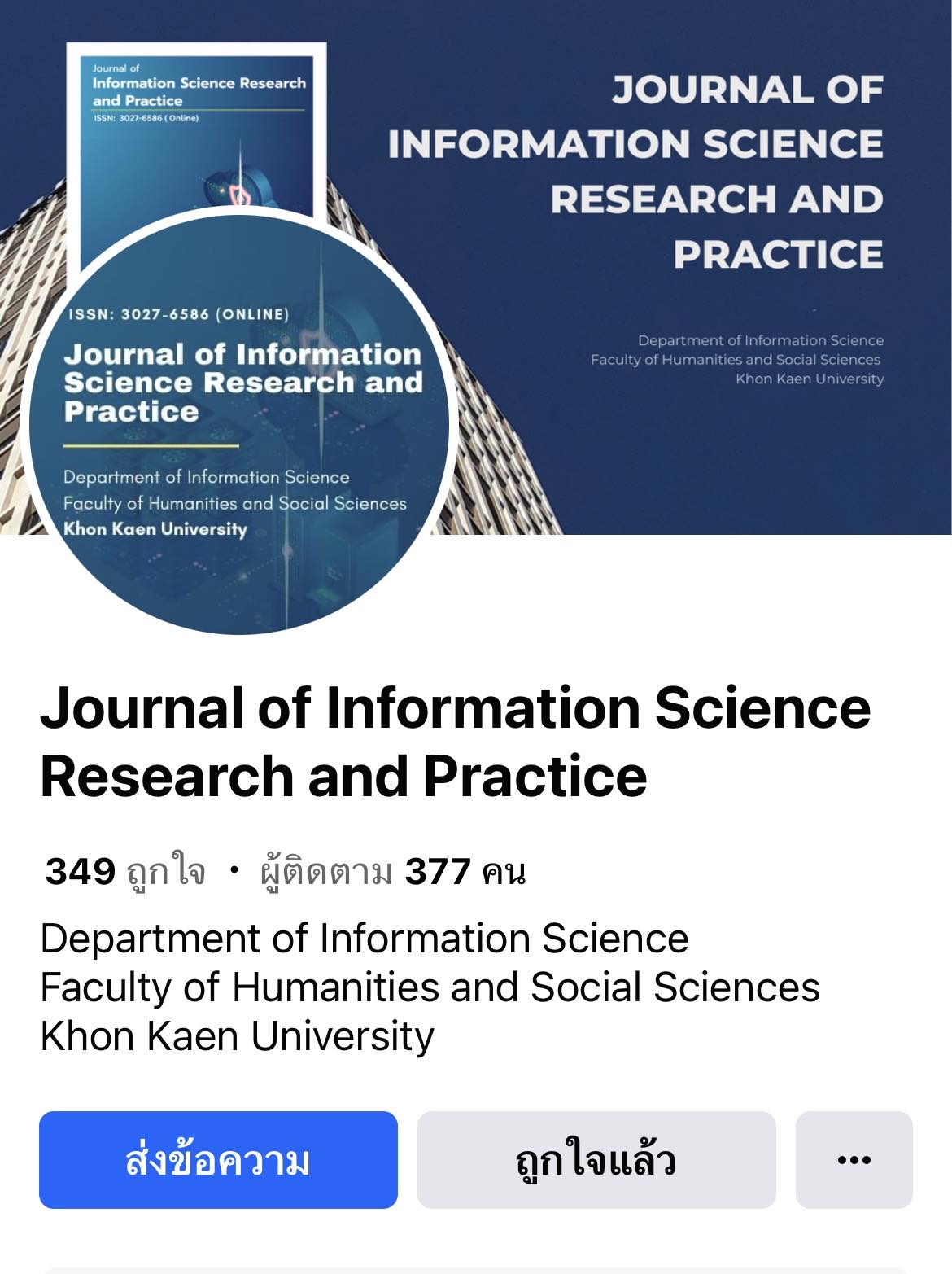The Development of 3D Animation Media for Muay Korat Martial Arts Using Motion Capture Technique
DOI:
https://doi.org/10.14456/jiskku.2025.2Keywords:
Muay Korat, 3D Animation, Inertial motion captureAbstract
Purpose: To develop a 3D animation website featuring Muay Korat (Korat Boxing) martial arts using motion capture technology, and to assess the website’ usability.
Methodology: The researcher applied inertial motion capture techniques by using body-tracking sensors on a model performer, a Muay Korat master. This approach captured and interpreted the performers’ movements in real time, allowing the collection of movement data for 47 Muay Korat techniques. The data was subsequently integrated into a 3D model to design and develop the 3D animated website, "Muay Korat 3D Interactive." The website usability was then evaluated with a sample group of 100 participants.
Findings: The 3D animations of 47 Muay Korat techniques displayed on the website include introductory knowledge about Muay Korat, its unique identity, and related terminology. The website's evaluation results showed that its usefulness received the highest average score at a "Good" level ( x̅ =2.72, S.D.=0.34), followed by efficiency ( x̅ =2.70, S.D.=0.49), controllability ( x̅ =2.62, S.D.=0.50), emotional impact ( x̅ =2.58, S.D.=0.29), and comprehensibility ( x̅ =2.48, S.D.=0.45). Overall, all five aspects were rated as "Good," with an overall average score of 2.62 out of 3.00 ( x̅ =2.62, S.D.=0.41).
Applications of this study: This study compiled the knowledge of Muay Korat techniques from skilled master trainers into an interactive 3D animation website. The platform allows users to engage with and learn the correct techniques conveniently, promoting broader awareness of Muay Korat. It is easily accessible and serves as a prototype for developing similar media for other sports.
Downloads
References
Berlo, D. K. (1960). The process of communication: An introduction to theory and practice. New York: Holt, Rinehart and Winston.
Chaisuk, P., Tungthongchai, O., & Prabphai, S. (2021). The website development for improving information perception of physical education activity courses. Thai Journal of Health, Physical Education and Recreation, Association of Health Education, Physical Education and Recreation of Thailand, Faculty of Sports Science, Chulalongkorn University, 47(1), 6-11.
Eiamsa-ard, Y., Wannisorn, K., & Thammakitipobb, V. (2018). Collectibles, antiques and heritage artifacts in 3d for education and conservation (A step toward Thailand virtual museum: Descriptive part). Journal of Mechanical Engineering, Faculty of Engineering, Kasetsart University, 29(95), 71-82.
ICOM TECH Co.,Ltd. (2022). User manual for Foheart·X. Bangkok: Icomtech Co., Ltd.
Kaewta, K., Kutintara, I., & Prasertsiripan, S. (2021). Factors influencing the intention to watch mixed martial art competition broadcasting in Thailand. Academic Journal of Thailand Nation Sports University, Faculty of Sports Science, Kasetsart University, 13(2), 38-44.
Kirakowski, J. & Corbett, M. (1993). SUMI: The software usability measurement inventory. British Journal of Educational Technology, 24(3), 210-212.
Menache, A. (2011). Understand motion capture for computer animation. United Kingdom: Elsevier.
Nakhon Ratchasima Provincial Statistical Office. (2020). Population. Retrieved from https://nkrat.nso.go.th/
Office of the National Culture Commission. (1997). The art of Muay Thai. Bangkok: Kurusapa Printing House.
Phithak, T. (2015). The development of an automatic 3D animation builder for displaying ukulele playing. Doctoral dissertation, School of Social Technology, Suranaree University of Technology.
Phithak, T., & Kamollimsakul, S. (2022). The martial arts of Muay Korat. Nakhon Ratchasima: Korat Printing.
Phithak, T., Thainchanam, K., & Kamollimsakul, S. (2023). The development of the Korat boxing digital museum with 3d animation using inertial motion capture techniques for preserving the ancient martial arts. 2023 International Conference on Computer Graphics and Image Processing (CGIP), (49–55). Tokyo: IEEE. https://doi.org/10.1109/cgip58526.2023.00018
Ribeiro, T. H., & Vieira, M. H. L. (2016). Motion capture technology benefits and challenges. International Journal of Innovative Research in Technology and Science, 4(1), 45-51.
Sawetrattanasatian, A. (2013). Think aloud technique and information system research. Journal of Social Sciences and Humanities Research in Asia, 19(4), 161-187.
Smarttapapong, C. (2017). The development of a facebook application for promotion of moodle utilization. Master’s thesis, School of Social Technology, Suranaree University of Technology.
Shingade, A., & Ghotkar, A. (2014). Animation of 3d human model using marker less motion capture applied to sports. International Journal of Computer Graphics & Animation, 4(1), 27-39.
Srikanth, M. (2013). Motion capture technology. India: Sreenidhi Institute of Science & Technology.
Tanthawanish, P., & Jindaasri, P. (2018). The real meaning of IOC. Journal of Educational Measurement, Mahasarakham University, 24(2), 3-12.
Tanaporn, S., Kanongchaiyos, P., & Tangmanee, C. (2010). Using motion capture for analysis struggle of judo. Journal of Engineering, Chulalongkorn University, 2(2), 49-68.
Thaothong, C. (2015). Online animation displaying from motion capture database. Master’s thesis, School of Information Technology and Management, Graduate School, Bangkok University.
Vanichbuncha, K. (2005). Statistics for research. 1st ed. Bangkok: Department of Statistics, Faculty of Commerce and Accountancy, Chulalongkorn University.
Watyotha, C. (2008). Muay Thai Korat. Khon Kaen: N.p. (Photocopied).
Yamane, T. (1973). Statistics: An introductory analysis. 3rd ed. New York, US: Harper and Row.
Zhou, L. (2015). Research on Sports Demonstration Teaching System Based on Kinect. Proceedings of the 2015 3rd International Conference on Machinery, Materials and Information Technology Applications. (1889–1893). Amsterdam: Atlantis Press. https://doi.org/10.2991/icmmita-15.2015.354








